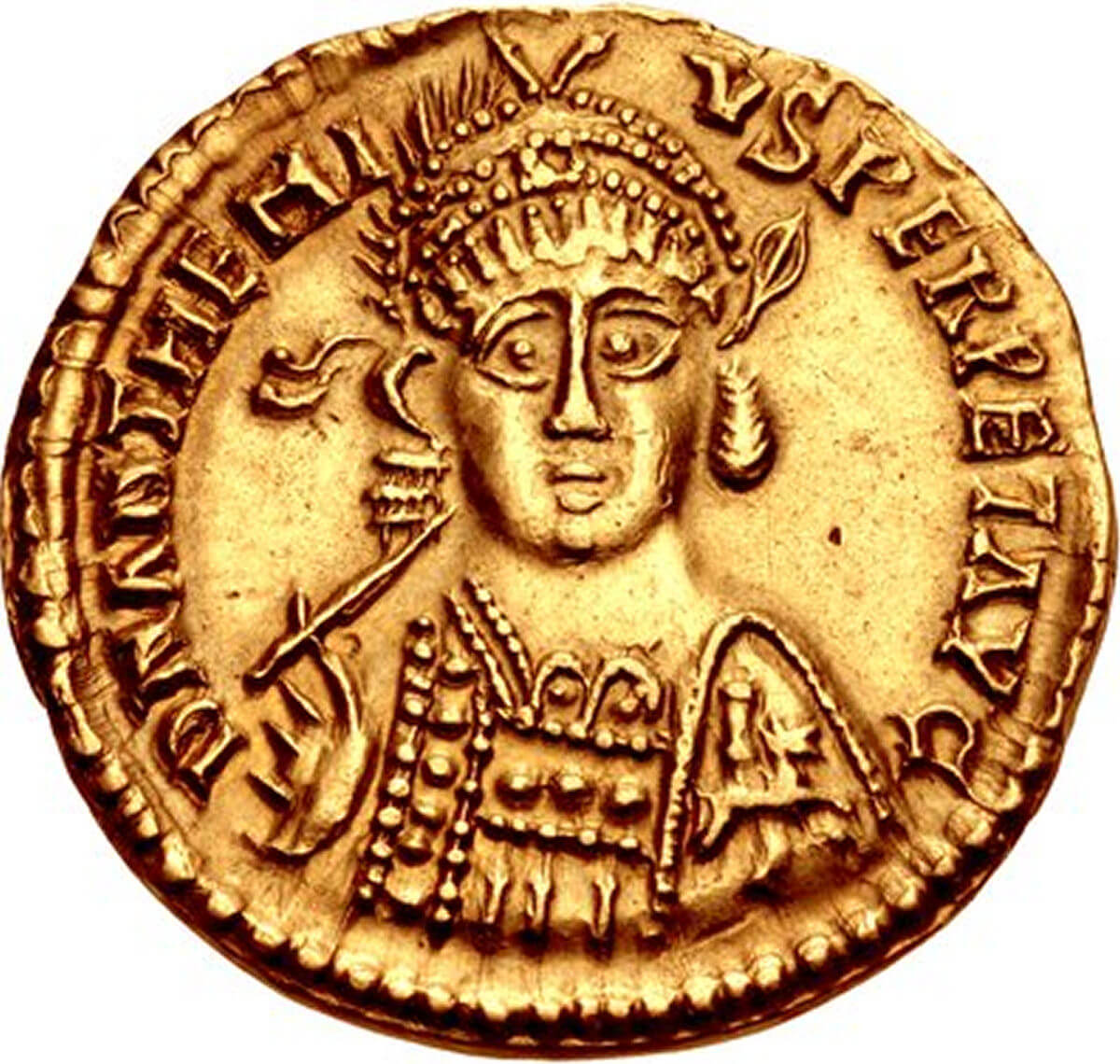Anthemius (420 - 472 AD)
Emperor: 467 - 472 AD
Anthemius came to power through merit and family influence. While a notable general, he was also the grandson of the infamous Anthemius, builder of the Theodosian walls and a notable philosopher. Perhaps most importantly, he had the support of the emperor of the East, Leo.
Anthemius marched on Rome with a substantial army that had been appointed to his command by the eastern emperor, and was quickly draped in the purple of the emperors on 12 August 467 AD.
Despite the rapid acceptance, Anthemius was being watched with much suspicion by the Suevian count Ricimer, who had effectively been king maker in the Western Empire for many years and had been responsible for the accession of this new emperor from the east.

Classical Numismatic Group, Inc. http://www.cngcoins.com, CC BY-SA 2.5, via Wikimedia Commons">Boboworkplace, CC BY-SA 3.0, via Wikimedia Commons
A gold solidus coin of Emperor Anthemius.
Despite his suspicions, Ricimer accepted Anthemius as the new western emperor. He had desperately needed Leo's support against the newly established Vandal kingdom in North Africa after the failure of Majorian's expedition.
However, even with the support of the Eastern Empire, the largest ever Roman expedition failed under the incompetent Basiliscus. The Vandal scourge continued to plague the West, further undermining Anthemius' rule.
At around the same time of the fatal expedition, the patrician Ricimer and Anthemius had a fatal falling out. Ricimer referred to Anthemius as an "excitable Galatian". The emperor even regretted marrying his daughter to the "fur clad barbarian".
In consequence, Ricimer moved to the old Tetrachic capital of Milan, while Anthemius remained in the ancient capital of Rome. Early in 472 AD, the barbarian had established his own kingdom in the north, while southern Italy - and what remained of Roman Gaul - remained loyal to the Emperor.
By April of that year, Ricimer had already crowned a new rival emperor to Anthemius. A distinguished senator and a man who could claim a connection to the Theodosian line, Olybrius is said to have taken the purple with certain reluctance.
Ricimer also placed Rome under siege by blocking the Tiber River and all landward approaches to the city hoping to force it into submission through starvation.
The populace, however, continued to support the Greek emperor instead of the barbarian. A relief army was sent from what remained of Roman Gaul but was easily defeated. With little alternative, the city shortly surrendered.
In a desperate attempt to avoid capture, Anthemius went into hiding and disguised himself as a common beggar. His attempt at evasion was to no avail, and he was quickly discovered by the soon to be new kingmaker, the Burgundian prince Gundobad. Anthemius was dispatched a short time later and relieved of his head on 11 July 472 AD.
At the outset of his reign Anthemius appeared to be poised to solidify Roman rule in the remaining provinces of the west, and perhaps re-establish authority in those that had been lost to the barbarians. To the Western Romans, he was just another in a string of ever-revolving emperors, and was viewed as a Greek with supposedly Pagan inclinations.
Though he was offered a degree of loyalty and support from his Gallic subjects, Anthemius never established himself as an extremely popular ruler. His policies in southern Gaul, in relation to the Burgundian and Visigothic kingdoms, further reduced Roman territory.
However, he is noted as an emperor who tried, with what resources the West had left, to bring the Roman empire back to life. Sadly, the decline of Rome could not be halted. All pretence of "Roman" authority would fall a mere four years later with the sack of Rome by Odoacer, the first Germanic King of Italy.



